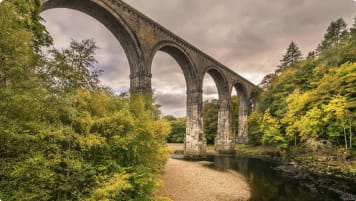Georgian Style of Architecture: Definitive Guide for Seniors
Article to provide the senior couple or mature solo traveler with an appreciation of the influence of Georgian Architecture in Britain when on a small group educational tour.
4 Oct 21 · 9 mins read

Georgian Style of Architecture
When the royal House of Hanover ascended the throne of the United Kingdom with George I in 1714, it ushered in a distinctive “Georgian style” seen in the architecture and interior design of the houses and buildings in Great Britain. In this article, we will look at the two main movements under the Georgian style of architecture–Palladianism and Neoclassicism–as well as the styles that later emerged and were revived in the 19th and 20th centuries.
From Elaborate Baroque to Restrained Styles
The Georgian style of architecture developed over a century during the reigns of the first four Hanoverian kings, from George I in 1714 to George IV in 1830. This architectural reformation did not happen immediately. Before George I took the throne, the Baroque style favoured by and inherited from the last three monarchs of the House of Stuart (namely, James II, Mary II, and Queen Anne) still reigned supreme.
Baroque, characterised by elaborate designs, luxurious materials, and ornate extravagance, had its roots in Rome and spread from Italy to the rest of continental Europe. Architects in the United Kingdom were also influenced by this opulent style. The greatest English architect under the Stuarts was Sir Christopher Wren, who designed 53 churches in London, including St Paul’s Cathedral. St Paul’s Cathedral was severely damaged during the English Civil Wars from 1642 to 1651, and Wren was tapped to oversee its reconstruction. While thinking about his design for St Paul’s, Wren travelled to France in 1665 and was inspired by the designs of the Louvre (at the time approaching completion) and the other buildings in the Paris. Wren and his followers thus designed their buildings in the Baroque style.
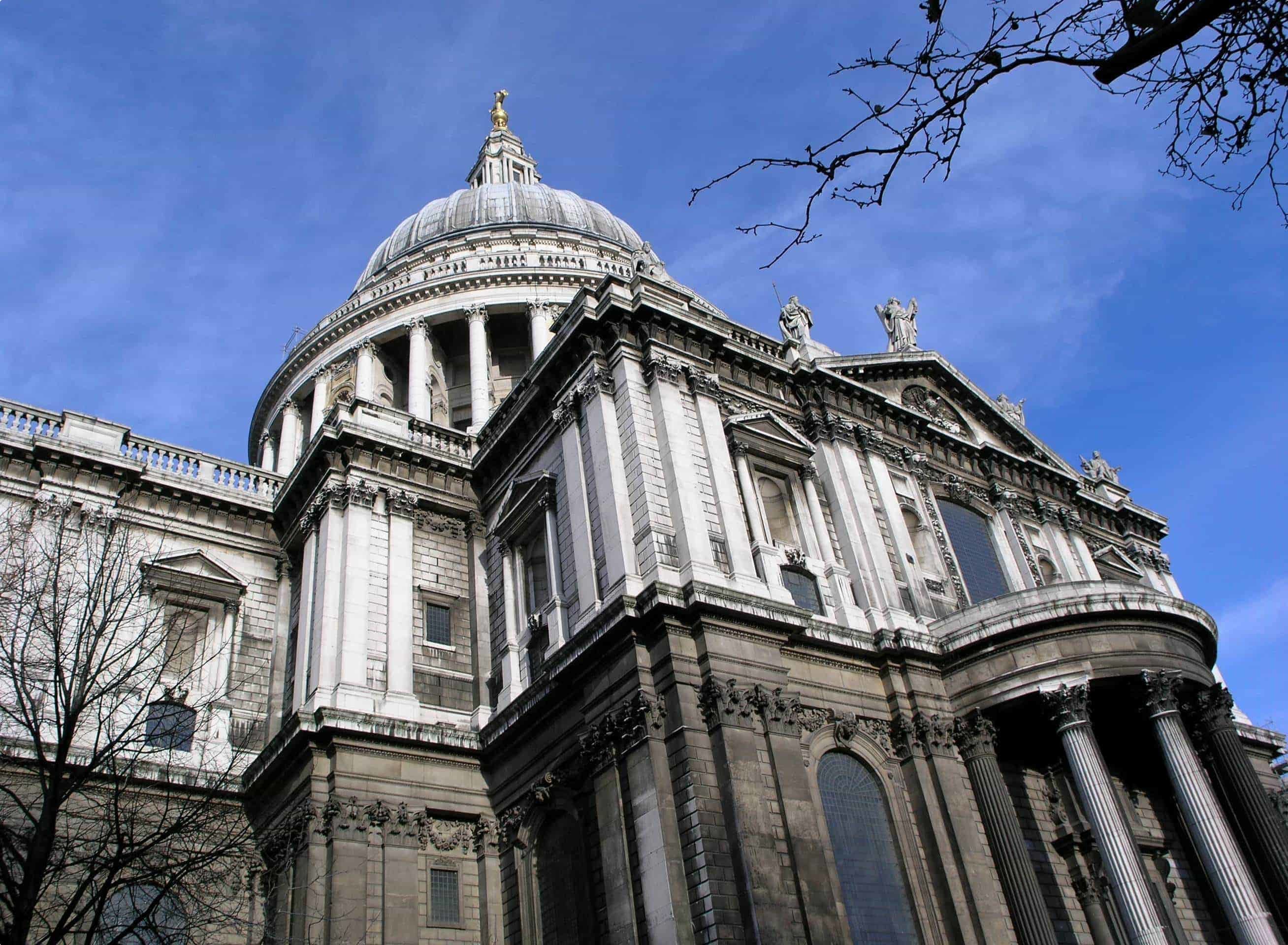
The Whigs, an association of aristocratic men who supported the Hanoverian dynasty, controlled government as well as the kingdom’s aesthetics. The Whigs opposed excesses of monarchical power, and eventually objected to the excesses of the Baroque style.
What followed was the development of two restrained styles under the Kings George–Palladianism and Neoclassicism.
Palladianism
Palladianism was not new, but interest in the movement was revived during the Hanoverian dynasty. The style dated back to the late 16th century, based on the theories of Italian architect Andrea Palladio (1508-80). Palladio, in turn influenced by the theories of Roman architect Vitruvius, believed architecture should show harmony, clarity, order, and symmetry, as governed by the principles of classical antiquity in ancient Rome.
Inigo Jones introduced Palladianism to England, after a trip to Italy exposed him to Palladio’s writings and the architecture of the Renaissance. Among the buildings showing this Palladian style were the Queen’s House at Greenwich, completed in 1635, and the Banqueting House at Whitehall, completed in 1622.
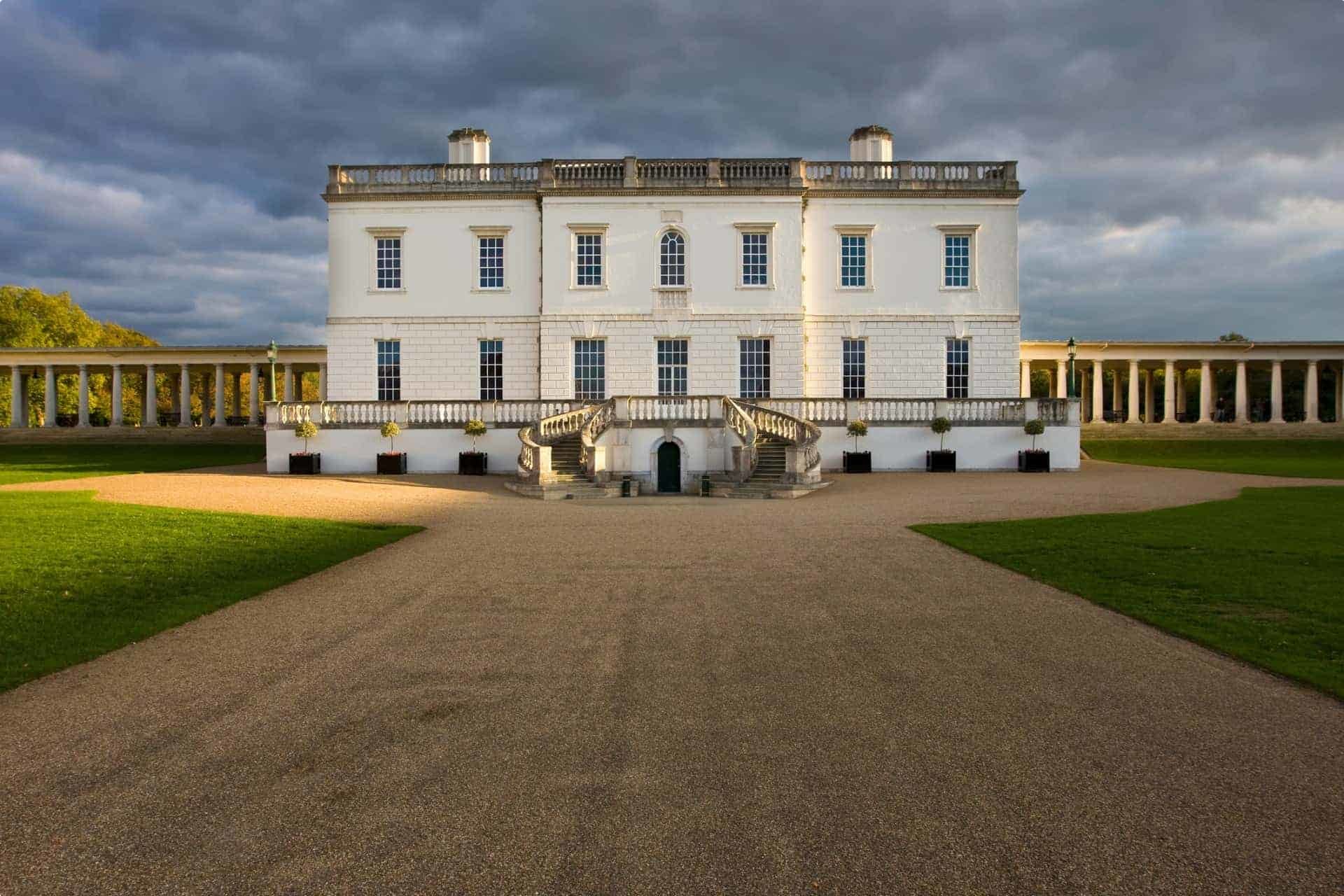
The renewed interest in Palladianism coincided with the publication of an English translation of Palladio’s I quattro libri dell’architettura or Four Books of Architecture, first published in 1570 and published in London in 1715. In the same year, Colen Campbell’s Vitruvius Britannicus was released, a folio showing 100 engravings of contemporary buildings built in the “classical” style in Britain. According to the Victoria & Albert Museum, Campbell’s book “was a plea for ‘antique simplicity’ and Campbell included examples of his own work, including his design for Wanstead [House].”
Wanstead House was now demolished, but a famous Palladian house remains standing. (The style is also referred to as neo-Palladian, as this is a revival.) Chris Rogers in How to Read London: A crash course in London architecture (Ivy Press, 2018) said Lord Burlington (Richard Boyle, 3rd Earl of Burlington), helped by his assistant and protégé William Kent, championed Palladio’s ideals with his own Chiswick House, a “statement of intent” (p. 48) for Palladianism.
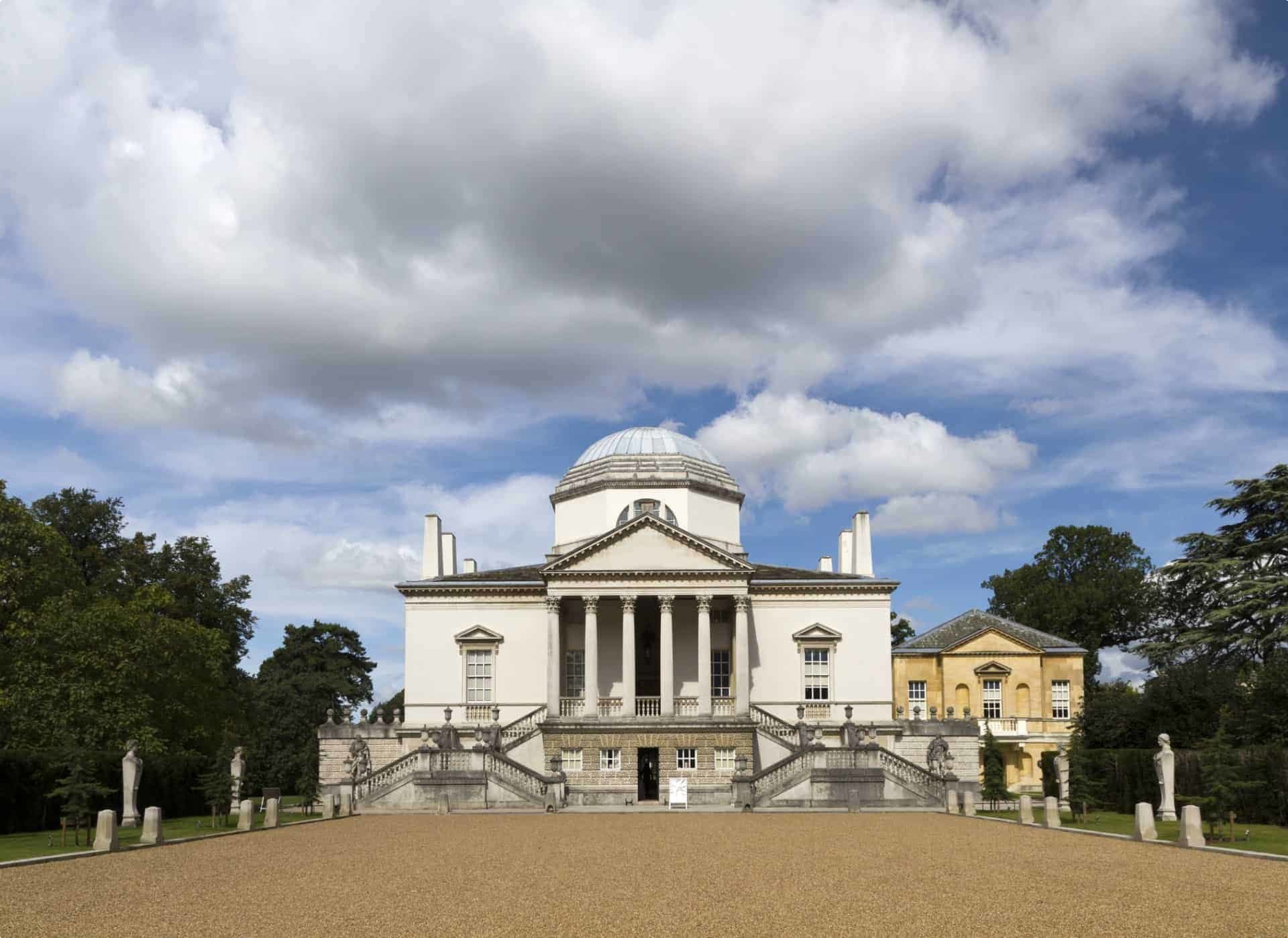
Palladian exteriors were plain and symmetrical but the interiors were often richly decorated. This can be seen in Chiswick House, built between 1725 and 1729. Chiswick’s centralised structure and square plan drew inspiration from Palladio’s Villa Rotonda near Vicenza, Italy, and from Jones’ designs. (You can see the similarities between Chiswick House and Queen’s House by just looking at the facade.)
As Rogers says, the best rooms are in the piano nobile, or the first floor of the house (p. 49). Piano nobile is Italian for “noble floor”, and is also used to describe the main floor of a Renaissance building. In a typical Renaissance palazzo, the reception rooms were in the piano nobile, directly above the basement or ground floor, accessed via a grand staircase.
Among these incredible rooms inside Chiswick is the Red Velvet Room, called as such as it is finished in rich, red velvet. This reception room celebrates Lord Burlington’s role “as patron of the arts”. As the official Chiswick House website describes:
The ceiling of the Red Velvet Room is decorated with painted panels attributed to William Kent. The central panel, showing Mercury and the Arts, is a visual declaration of Burlington’s role as patron of the arts. The messenger god, Mercury, directs a cornucopia or horn of plenty towards female figures representing the visual arts – Architecture, Sculpture and Painting. The figure representing painting holds a self-portrait of Kent.
Another room is the Blue Velvet Room, Burlington’s study, which serves as a shrine to both Palladio and Jones. It is filled with Palladio’s drawings and has Jones’ portrait over a pediment (p. 49). A pediment is a triangular gable forming the end of the roof slope over an entrance, or a similar form used decoratively over a doorway or window. It is an architectural element found in Greek temples and used in Palladian style buildings. Other common Palladian architectural elements were columns, masks, and the use of symmetry.
Holkham Hall in Norfolk was designed by Kent for Thomas Coke, the 1st Earl of Leicester. Thomas Coke met Lord Burlington and Kent in Rome during his six-year Grand Tour of Europe, and together imagined a manor that would serve as the residence of the Earls of Leicester.
(A quick note about the “Grand Tour”: the practice of young English elites spending two or more years in Europe to broaden their horizons was called the Grand Tour and gained popularity in the 17th century. These wealthy youths, whose families could foot the bill for their expenses abroad, often visited Paris, Rome, and Venice.)
This Palladian style country house, completed in 1764, was also symmetrical in layout, with Kent even adding fake doors in some state rooms just to achieve this mirror-image effect. Kent based the exterior design on Palladio’s Villa Mocenigo; the villa was never built but its design was included in Palladio’s treatise Four Books of Architecture.
Much like Chiswick House, Holkham Hall’s simple exterior is contrasted with its opulently designed interiors. The mansion’s Saloon, for example, was finished with caffoy, a crimson mixture of wool, linen and silk.
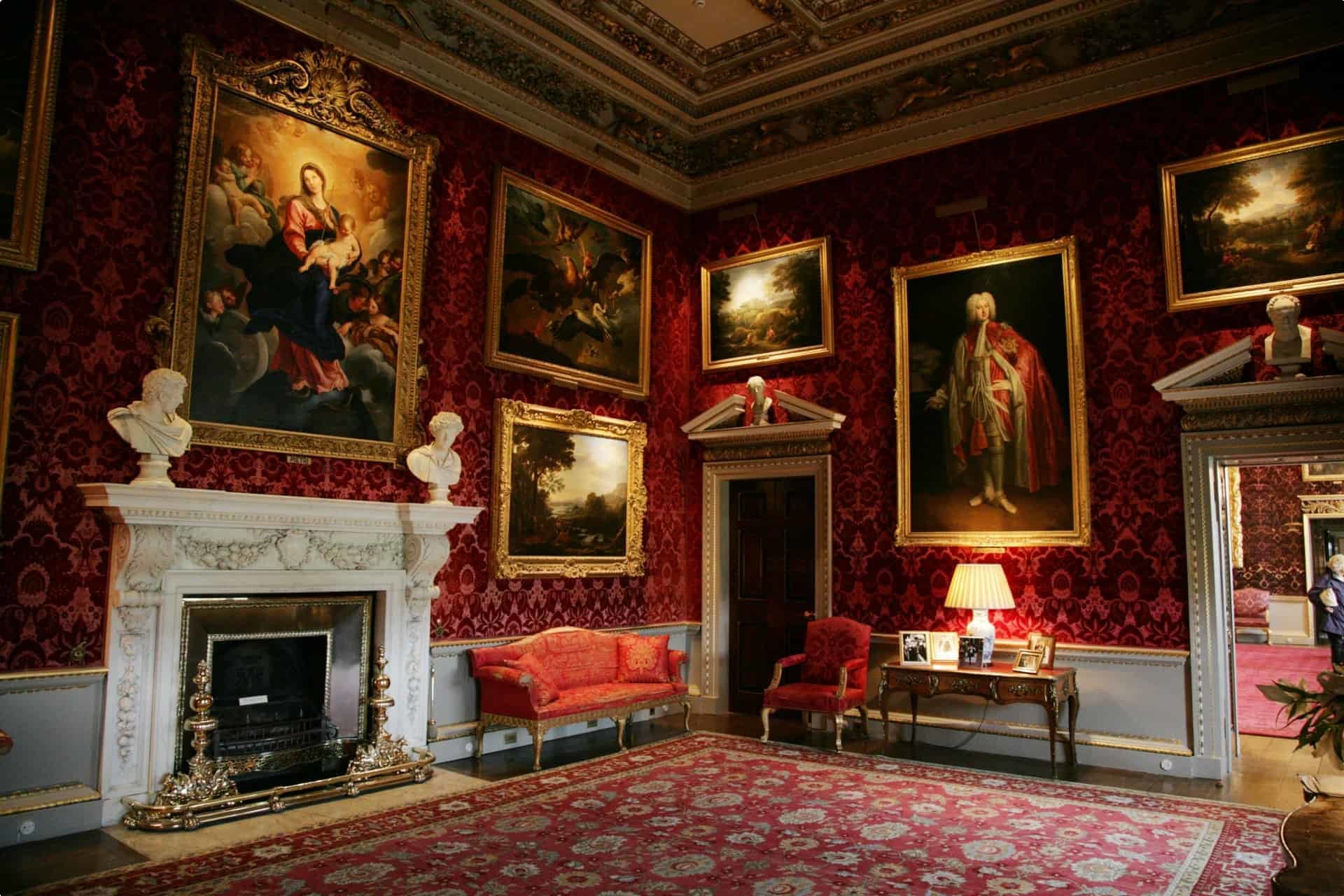
Both Chiswick House and Holkham Hall can be accessed by the public on guided tours.
Other Palladian buildings of note include Mansion House and Spencer House, which Rogers (2018) says connects Palladianism with later Neoclassicism in a single space (p.52).
Mansion House, built from 1739 to 1752 to serve as the residence of the Lord Mayor of London, was designed by George Dance the Elder, with further designs added by his son, George Dance the Younger, in 1795. Designs of the interior, which featured the colonnaded “Egyptian Hall” and sculptured plasterwork, were inspired by Kent and Campbell (p. 50).
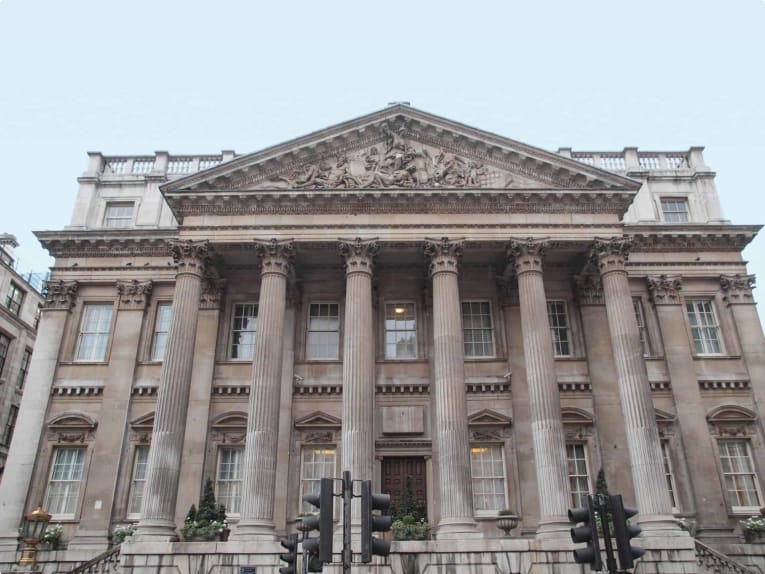
The exterior, ground floor, and upper floor layouts of Spencer House (completed in 1766 for John, first Earl Spencer, an ancestor of Diana, Princess of Wales) was designed by John Vardy, a student of Kent (p. 52), before he was replaced in 1758 by James Stuart. Stuart, nicknamed the “Athenian”, was newly returned from Greece and brought his Neoclassical aesthetics into the house’s interiors.
Neoclassicism
Neoclassicism came into fashion in Britain in the mid-18th century. It is similar in roots to Palladianism–a desire to resurrect classical architecture–but whereas Palladianism still used the Italian Renaissance palazzos as models and influences (since it is, after all, antiquity as seen through Palladio’s eyes), Neoclassicism put greater emphasis on the styles of classical Greece and Rome, hugely influenced by the archaeological discoveries made at Herculaneum and Pompeii. What resulted was a more austere design, with ancient Greek and Roman architectural elements dominating British architecture for much of the period.
The aforementioned James “Athenian” Stuart was an architect, but he was also an archaeologist. With Nicholas Revett, he co-wrote The Antiquities of Athens, published in 1762, the first accurate survey of Classical Greek remains. There are three Greek architectural orders–Doric, Ionic, and Corinthian, with Doric believed to be the earliest and the simplest in terms of design, and Corinthian the latest and most elaborate. Stuart and Everett’s book on ancient Greece became a major source of inspiration for architects and designers.
Stuart applied his knowledge of antiquity on his designs for Spencer House. Spencer House’s Entrance Hall immediately gives the visitor echoes of ancient Rome: its features are derived from the Temple of Jupiter the Thunderer, with its Doric frieze (horizontal element with alternating pattern of sculptural relief) and bucrania (carved decoration). It also has an oval classical relief depicting Antinous, a Greek youth who was said to be the favourite of the Roman Emperor Hadrian. Its Palm Room features half-columns with carved and gilded palm trees, underlining the ancient Greek belief that architectural forms are derived from nature (Rogers, 2018, p.53). The frieze showing depictions of griffins and candelabra is inspired by the Temple of Antoninus and Faustina in Rome.
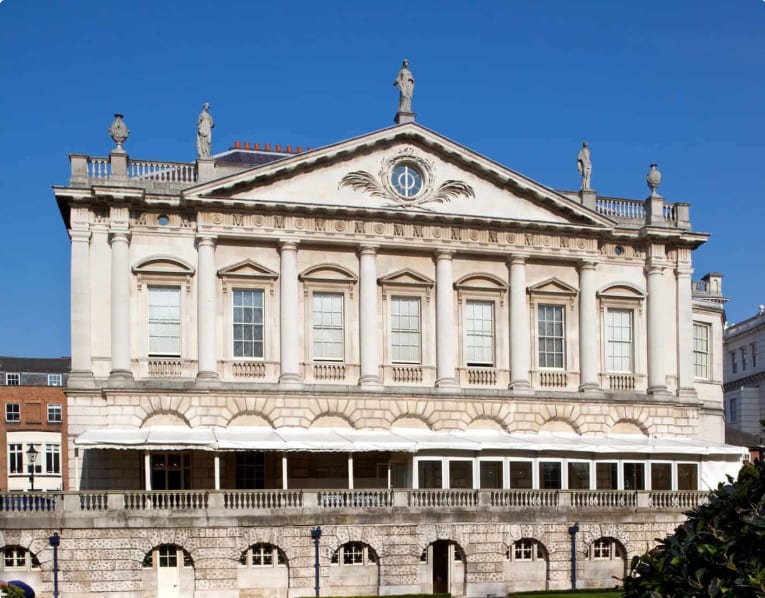
Another important Neoclassical architect was Scotland-born Robert Adam, who embarked on a Grand Tour of Europe in the 1750s, studying the classical architecture found in France and Italy. Upon his return, he established his own practice with his younger brother, James. The brothers developed the “Adam style”, deriving inspiration from classical design but not adhering to it strictly, producing a fresh, distinctive look. To quote Sandra Millikin, “In the Royal Society of Arts building (1772–74), for instance, Adam placed Ionic capitals below a Doric triglyph frieze, a liberty a Palladian would never have dared take.” The Adam brothers also custom-designed furnishings, producing a clean unity in design from their playful, mix-and-match technique.
Other buildings built in the Neoclassical style are Bedford Square, with its pedimented centerpiece and Ionic style, and the Bank of England, with its Corinthian columns.

Later Styles and Revivals
During the reign of George IV, representing the late phase of the Georgian era, a style of architecture called Regency came to the fore. We’ve covered the Regency style in our article about women’s fashion. “Regent” is a term used to describe a person appointed to govern because the monarch is a minor, absent, or incapacitated. The years 1795 to 1837 was called the “Regency era” because it included the period when George III was deemed unfit to rule due to mental illness, and his son, George IV (Queen Victoria’s uncle) had to rule in his stead as Prince Regent.
The major source of inspiration for the Regency style was still classical antiquity, but it went beyond Rome and Greece, now including Egyptian motifs (following the Napoleonic expeditions to Egypt in 1798) and Asian styles, particularly those inspired by India and China. This is evident in the design of the Royal Pavilion in Brighton, the work of architect John Nash for George IV. It was initially a farmhouse, then a Neoclassical pavilion–a building not out of place in Brighton–until Nash took over in 1815. The Royal Pavilion, as we see it today, features domes and minarets, a surprising Indian-style palace in this English seaside town.
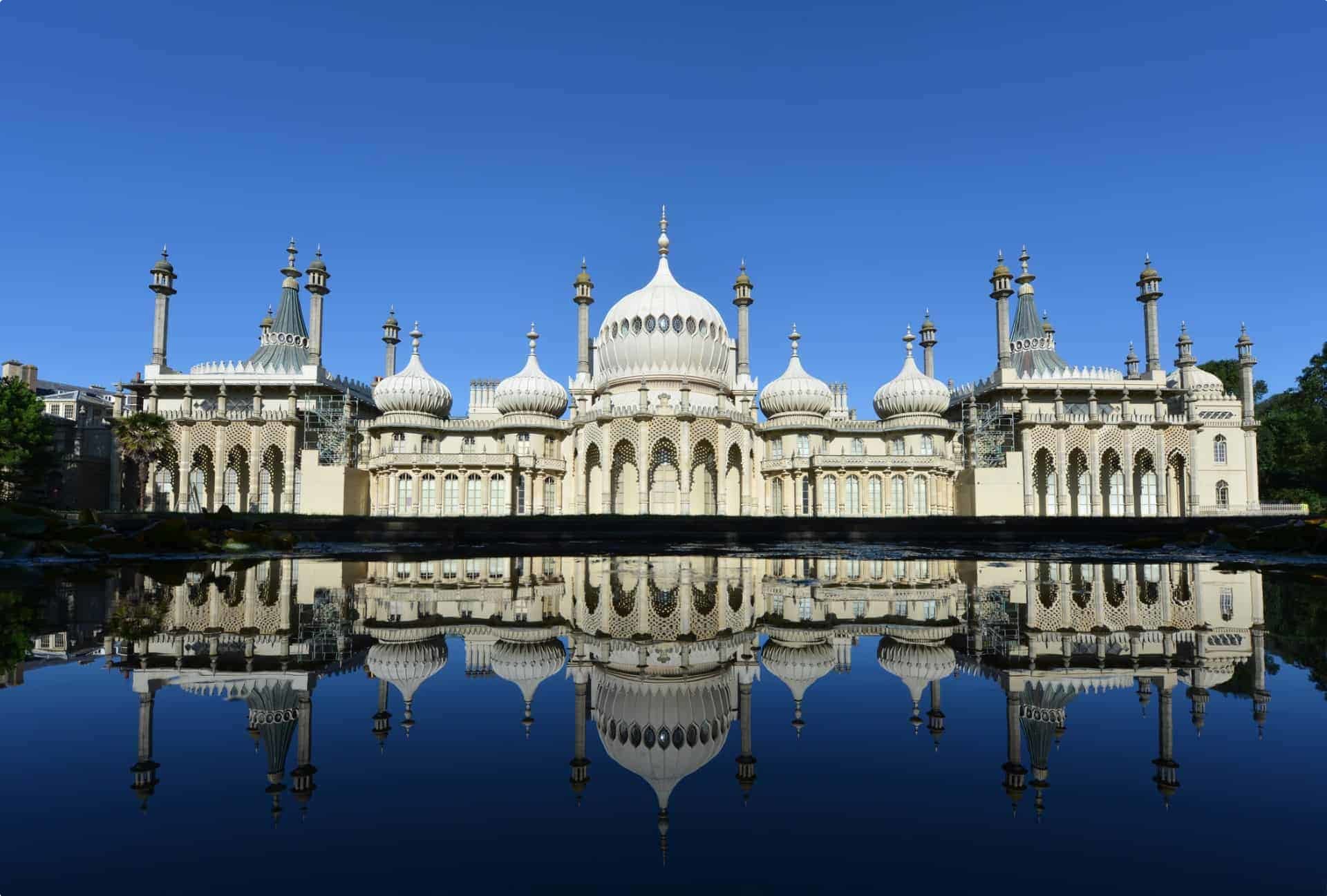
Other buildings built during the Regency were not as splashy, and still followed the detail and structure of buildings from the Classical era. Nash’s own Nash Route, a processional route commissioned by the Prince Regent in 1810 to connect Carlton House (now Carlton House Terrace) to what is now Regent’s Park, is dotted with buildings with Neoclassical facades. Rogers (2018) calls the Nash Route “one of the most important pieces of town planning in London’s history” (p. 60).
Other examples include the Weymouth Esplanade and the Bath’s famous Royal Crescent.

Gothic Revival, or the romanticised revival of the architectural style of the Middle Ages, competed with the Neoclassical style still favoured in Britain towards the end of the Georgian era. The Gothic Revival style would eventually dominate the kingdom, especially when Victoria succeeds George IV as monarch. This is why Gothic Revival is also referred to as “Victorian Gothic”.
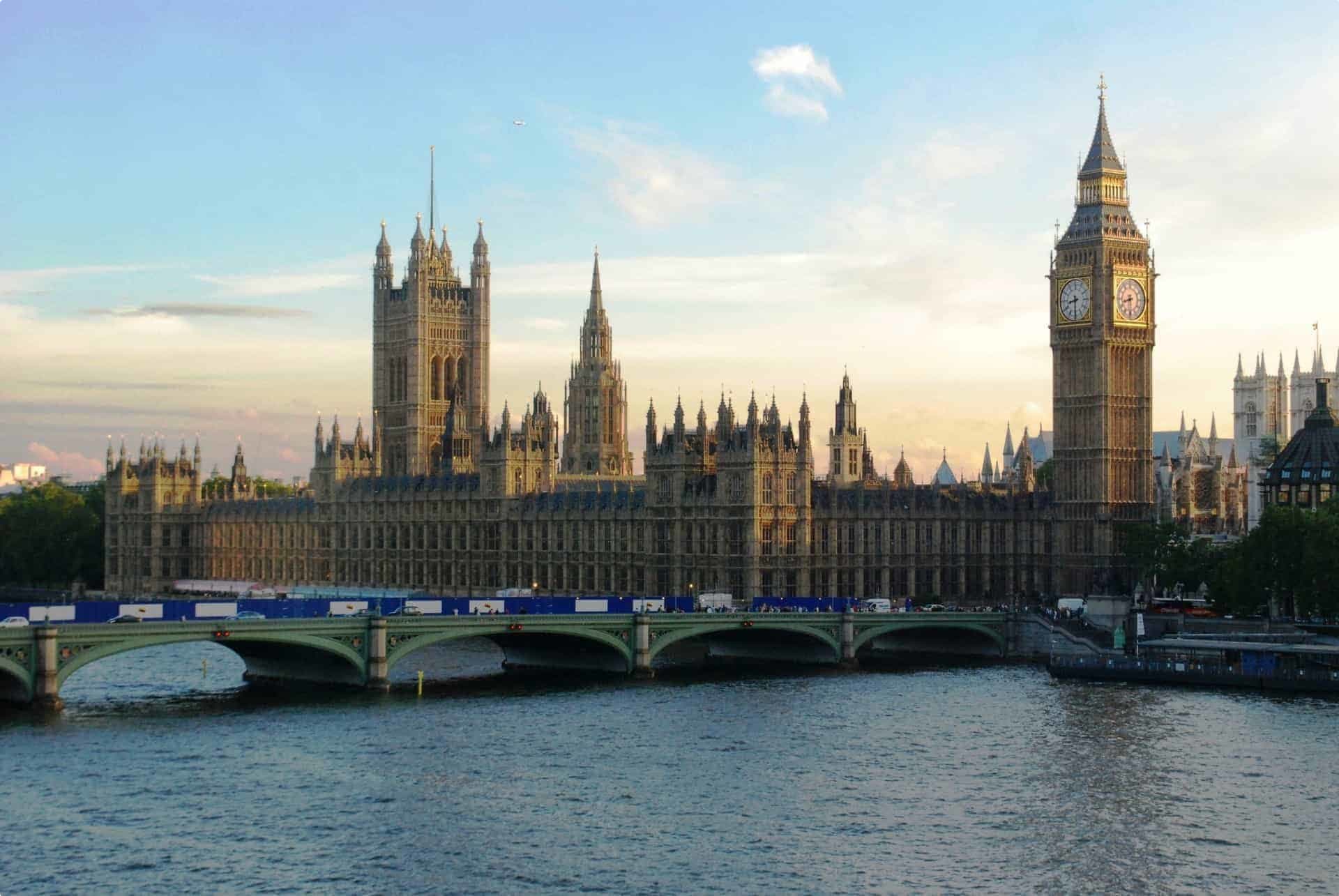
The Georgian style was later revived in the 19th and 20th centuries. In the United States, it is called Colonial Revival architecture, which revives the American architecture popular around the Revolutionary War (fought between the American colonies and Great Britain in the 18th century), which in turn was inspired by Georgian architecture. In Britain, it is referred to as Neo-Georgian architecture, with architects and designers returning to the symmetry and simplicity of Neoclassical lines, perhaps also as a way of returning to “the good old days”. As discussed by artist Pablo Bronstein in a 2017 interview:
“The London of the Georgian period linked the palace and suburbs of Westminster to the City of London through a series of grand residential developments. An architecture associated with growth, with the birth of a new social order, and with a growing sense of national identity (the national anthem was composed during the period) is always an attractive thing to hark back to.”
If you want to learn more about Georgian architecture, we recommend Chris Rogers’ How to Read London: A crash course in London architecture (Ivy Press, 2018) which was used as a reference for the article, as well as the other valuable sources we’ve linked throughout this piece.
Odyssey Traveller offers several tours to England including a tour focused on Victorian Britain, and a short tour in London that can be booked as an extension tour. Our small group tours are especially designed for senior travellers. Just click the links to see the full itinerary and sign up!
Refreshed October 4th 2021.
Related Articles
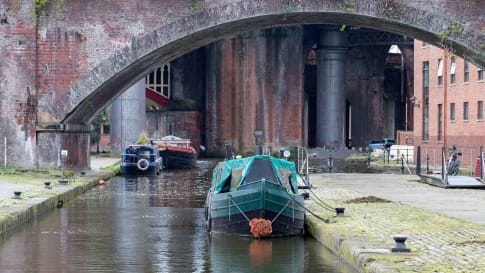
Britain: First Industrial Nation
Britain: The First Industrial Nation In the mid-18th century, the Industrial Revolution was largely confined to Britain. Historians and economists continue to debate what it was that sparked the urbanisation and industrialisation that would change…
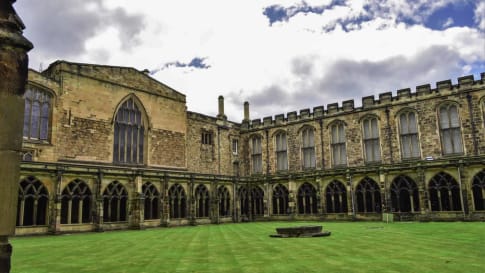
Durham, England
Durham is a city steeped in history and packed full of hidden gems. Explore this UNESCO World Heritage city on Roaming Rural England . This small group has a guided visit of Durham Cathedral and walks the city.

Edinburgh, Scotland
Article about the capital of Scotland, Edinburgh. Senior couple and mature solo travellers explore this city and Glasgow plus the Scottish isles in writing and on a small group tour with like minded people.
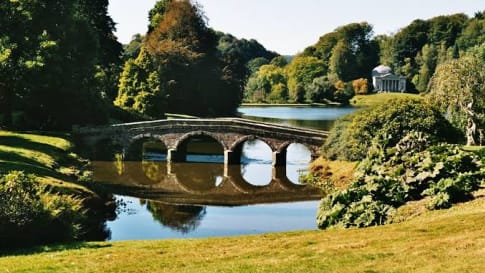
Capability Brown: The English Garden Genius
Article for senior couples and mature solo travellers interested in gardens and design in England and Europe with small group tours of interest.. Brown is regarded as a genius.

Exploring Jane Austen’s England
Exploring Jane Austen’s England Jane Austen The reach and magnitude of Jane Austen’s influence on modern readers may make one forget that she only had six novels to her name (three of which were published…
Related Tours
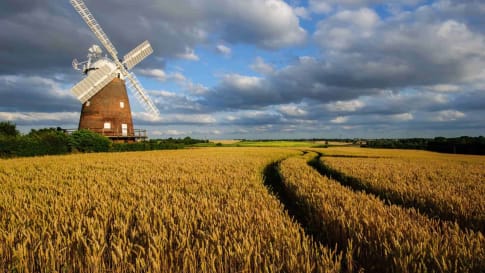
23 days
AprAgrarian and Industrial Britain | Small Group Tour for Mature Travellers
Visiting England, Wales
A small group tour of England that will explore the history of Agrarian and Industrial period. An escorted tour with a tour director and knowledgeable local guides take you on a 22 day trip to key places such as London, Bristol, Oxford & York, where the history was made.
From A$17,275 AUD
View Tour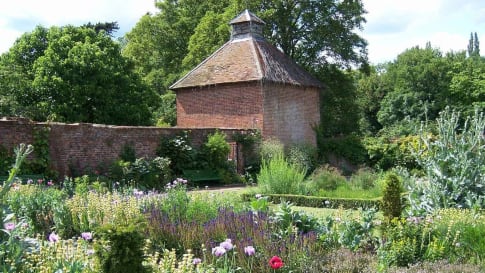
16 days
JunBritish Gardens Small Group Tour including Chatsworth RHS show
Visiting England, Scotland
From A$16,895 AUD
View Tour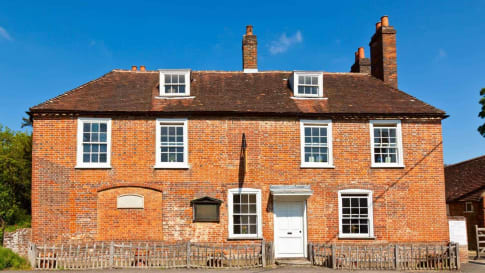
22 days
AugDiscovering the art and literature of England: Jane Austen, Shakespeare, and more
Visiting England
Stratford upon Avon, Shakespeares birthplace and Anne Hathaway's cottage as well as the Lake district a UNESCO World site and Dicken's London are part of guided tour for a small group tour of like minded people learning about the art and literature of England. Your tour leader and local guides share day tour itineraries to create a unique travel experience.
From A$17,765 AUD
View Tour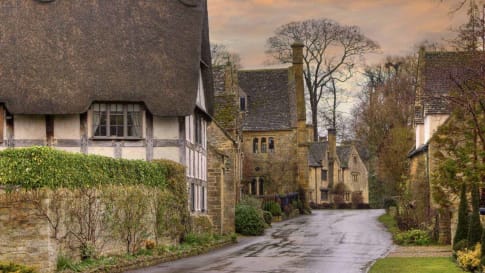
19 days
Jun, SepEngland’s villages small group history tours for mature travellers
Visiting England
Guided tour of the villages of England. The tour leader manages local guides to share their knowledge to give an authentic experience across England. This trip includes the UNESCO World heritage site of Avebury as well as villages in Cornwall, Devon, Dartmoor the border of Wales and the Cotswolds.
From A$16,995 AUD
View Tour


